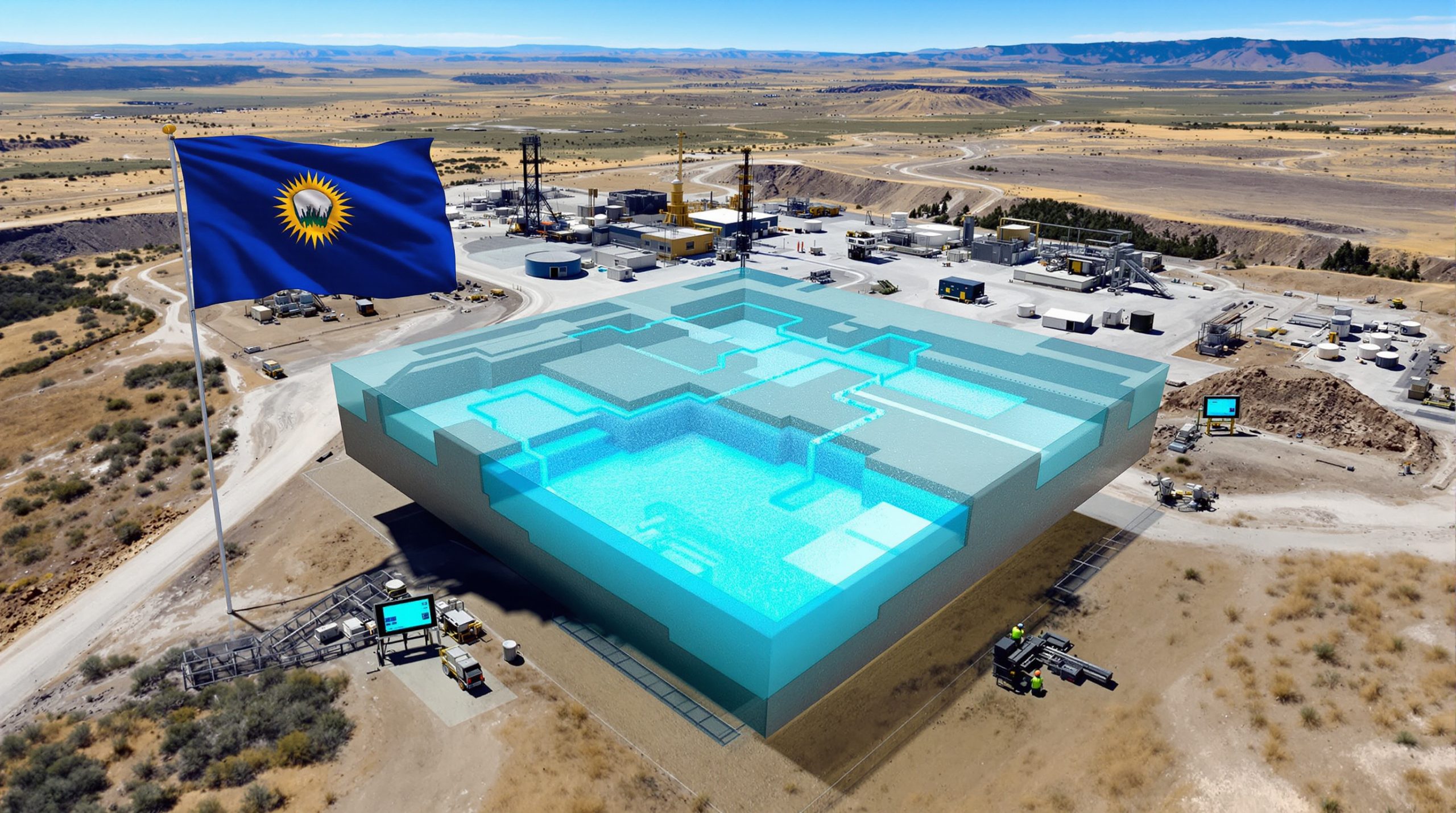Renascor's Downstream Graphite Plant: Advancing Australia's Battery Material Future
Australia is making significant strides in establishing itself as a key player in the global battery supply chain with Renascor Resources' innovative downstream graphite processing facility. This Adelaide-based project represents a strategic move to challenge China's dominance in purified spherical graphite (PSG) production while introducing environmentally superior processing methods.
The vertically-integrated battery anode material operation aims to position Australia as a competitive alternative in the global graphite processing market, creating new opportunities for critical minerals energy transition within the country.
The Significance of Purified Spherical Graphite
Purified spherical graphite serves as a critical component in lithium-ion battery anodes, which power everything from electric vehicles to renewable energy storage systems. The material must undergo precise processing to achieve specific shapes and purity levels required for optimal battery performance.
Traditional PSG production involves multiple stages including purification, spheronization, and coating—with most global capacity currently concentrated in China. Renascor's facility aims to diversify this supply chain by establishing a production hub in South Australia with advanced environmental credentials.
Project Status and Construction Timeline
The PSG demonstration facility in Adelaide is progressing rapidly, with commissioning scheduled for Q4 2025. Recent developments indicate the project is meeting its timeline targets and advancing through critical construction phases.
Site preparation work has been completed, including civil groundwork and services installation. The company has awarded the primary installation contract covering structural, mechanical, and piping works, with construction scheduled to begin in September 2025.
Equipment testing has been finalized with initial components already delivered to Adelaide. The first shipments of bulk graphite sample material, which will serve as feedstock for the facility, are currently in transit to the site.
Timeline Milestones for the Facility
| Phase | Status | Expected Completion |
|---|---|---|
| Design | Complete | Q2 2025 |
| Site Preparation | Complete | Q3 2025 |
| Equipment Testing | Complete | Q3 2025 |
| Construction | Beginning | Q3-Q4 2025 |
| Commissioning | Planned | Q4 2025 |
The systematic approach to development demonstrates Renascor's commitment to establishing a reliable production timeline for this strategic facility.
Strategic Importance of Domestic Graphite Processing
Breaking China's Graphite Processing Dominance
The downstream graphite processing sector has been predominantly controlled by Chinese manufacturers, creating potential supply chain vulnerabilities for Western economies transitioning to electric mobility and renewable energy.
Renascor's facility aims to diversify the global supply chain by establishing Australia as an alternative source of high-quality battery anode material. This aligns with broader international efforts to reduce dependency on single-source regions for strategic minerals reserve and processed materials.
Managing director David Christensen has emphasized that the facility will "showcase and optimize our hydrofluoric acid-free purification process and deliver a globally competitive Australian alternative to China's current monopoly on PSG production."
Environmental Innovation in Processing
A distinguishing feature of Renascor's approach is its hydrofluoric acid-free purification process. This represents a significant environmental advancement compared to conventional methods, which typically rely on hydrofluoric acid—a highly toxic chemical with substantial environmental and safety concerns.
The innovative purification technology offers several advantages:
- Reduced environmental impact through elimination of hazardous chemicals
- Improved worker safety protocols compared to traditional methods
- Potential cost advantages in regulatory compliance and safety measures
- Enhanced marketability to environmentally conscious battery manufacturers
This environmental innovation positions the project favorably in markets with stringent environmental regulations, particularly in Europe and North America.
Economic Benefits for Australia
The development of downstream processing capability for critical minerals represents a significant opportunity for Australia to capture more value from its natural resources. Specific benefits include:
- Creation of skilled jobs in advanced manufacturing
- Development of domestic expertise in critical mineral processing
- Potential for export revenue from processed materials rather than raw commodities
- Enhanced positioning in the global battery supply chain
- Technology development that could be applied to other critical minerals
The project aligns with Australia's broader goals for mining decarbonisation benefits through enhanced processing capabilities.
Project Funding and Government Support
The demonstration facility has received significant government backing, highlighting its strategic importance to Australia's critical minerals strategy and future industrial development.
Government Financial Support
The project received a $5 million grant from the Federal Government's International Partnerships in Critical Minerals Program. This financial support demonstrates the national significance of establishing domestic processing capabilities for battery materials.
The South Australian Government granted construction approval in June 2025, further reinforcing the project's alignment with state development priorities. This multi-level government support provides both funding security and regulatory clarity for the project's advancement.
Strategic Policy Alignment
The Renascor project aligns with several government policy objectives:
- Developing domestic processing capabilities for critical minerals
- Reducing dependency on overseas processing of Australian resources
- Supporting the transition to renewable energy and electric mobility
- Creating advanced manufacturing opportunities in regional areas
- Establishing Australia as a reliable supplier of processed critical minerals
Technical Aspects of the Facility
Process Innovation
The demonstration facility will showcase Renascor's proprietary purification process that avoids the use of hydrofluoric acid, which is commonly employed in traditional graphite purification methods.
The facility serves as a platform to test, demonstrate, and optimize this innovative approach, which offers potential advantages in both environmental performance and operational safety. Technical details of the process remain proprietary, but the elimination of hydrofluoric acid represents a significant departure from conventional methods.
Facility Purpose and Operational Goals
The demonstration plant serves multiple strategic functions in Renascor's broader commercialization strategy:
- Testing and optimization of the purification process at scale
- Demonstration of the technology to potential customers and investors
- Collection of operational data to inform the design of a full-scale commercial facility
- Production of sample materials for qualification with battery manufacturers
- Validation of economic and environmental performance metrics
These operational goals position the facility as a crucial stepping stone between laboratory-scale development and full commercial implementation.
Pathway to Commercial Production
Learnings and Scale-Up
The demonstration facility represents an intermediate step toward full commercial production. Insights gained from this phase will directly inform the development of a larger-scale operation with enhanced efficiency and performance.
Key areas of focus during the demonstration phase include:
- Process optimization based on continuous operation
- Design refinements for the full-scale commercial facility
- Customer qualification of produced PSG material
- Expansion of market relationships and offtake agreements
- Refinement of operational parameters for maximum efficiency
Commercial Facility Development
The knowledge gained from operating the demonstration plant will be applied to the design, construction, and operation of a full-scale commercial facility. This larger operation will process graphite concentrates from the Siviour project for use in lithium-ion battery anodes with optimized processes based on demonstration-scale learnings.
The commercial facility will need to achieve competitive production costs while maintaining the environmental advantages of the innovative purification process to succeed in the global market.
Market Outlook for Purified Spherical Graphite
Growing Demand from Battery Sector
The global transition to electric vehicles and renewable energy storage is driving substantial growth in demand for battery materials, including purified spherical graphite. Market forecasts indicate continued expansion of demand as automotive manufacturers accelerate their electric vehicle production targets.
This growing market provides the fundamental demand basis for new PSG production capacity outside of traditional supply regions and represents a significant opportunity for battery metals investment.
Supply Chain Security Concerns
Several factors are driving interest in supply diversification for battery materials:
- Current concentration of processing capacity in China presents supply chain risks
- Automotive and battery manufacturers seeking supply diversification
- Government policies worldwide supporting domestic processing of critical minerals
- Growing importance of ESG (Environmental, Social, Governance) credentials in supply chain decisions
These factors create favorable market conditions for new entrants with strong environmental credentials and secure supply chain positioning.
Competitive Positioning
Renascor's downstream graphite plant, with its innovative environmental approach, positions the company to potentially capture market share in regions prioritizing sustainable supply chains, particularly in markets with stringent environmental regulations.
The combination of Australian regulatory stability, innovative processing technology, and vertical integration from mine to PSG production creates a compelling value proposition for battery manufacturers seeking supply chain diversification.
FAQ: Renascor's Downstream Graphite Project
How does purified spherical graphite fit into the battery supply chain?
PSG is a critical component in the anode of lithium-ion batteries. The graphite must be processed to specific shapes and purities to function effectively in battery applications. This processing involves multiple steps including purification, shaping, and coating. The finished material contributes to battery performance, longevity, and charging characteristics.
What makes Renascor's purification process different from conventional methods?
Renascor's process eliminates the use of hydrofluoric acid, which is commonly used in traditional graphite purification. This innovation addresses significant environmental and safety concerns associated with conventional processing methods while aiming to maintain or improve product quality and cost-effectiveness.
Why is developing domestic graphite processing capability important for Australia?
Developing downstream processing capabilities allows Australia to capture more value from its natural resources, create skilled jobs, and establish a more resilient position in global supply chains for critical minerals essential to the clean energy transition. It also reduces the carbon footprint associated with shipping raw materials overseas for processing before reimporting finished products.
What are the potential economic benefits of the project?
Beyond the immediate construction and operational jobs, the project could help establish Australia as a significant player in the battery materials supply chain, creating opportunities for further investment in related industries and technologies. The development of technical expertise and processing capabilities may also lead to additional downstream opportunities in battery component manufacturing.
Environmental and Sustainability Considerations
Reducing Environmental Impact of Battery Materials
The battery supply chain faces increasing scrutiny regarding its environmental footprint. Renascor's approach to eliminating hydrofluoric acid represents a significant advancement in making graphite processing more environmentally responsible.
Key environmental benefits include:
- Elimination of toxic chemicals in processing
- Reduced waste management requirements
- Potential for lower energy consumption in purification
- Smaller environmental footprint compared to conventional methods
Carbon Footprint Advantages
The localization of processing near graphite mining operations potentially reduces the carbon footprint associated with global shipping of materials. This vertical integration approach aligns with growing market demand for battery materials with demonstrated environmental advantages throughout their lifecycle.
According to a recent bulk sample production report, the company has made significant progress in preparing material for testing in the demonstration facility.
Conclusion: Australia's Battery Material Future
Renascor's downstream graphite plant represents an important step in Australia's evolution from a supplier of raw materials to a producer of high-value processed materials for the global battery industry. The combination of innovative processing technology, government support, and growing market demand creates favorable conditions for success.
As the facility progresses toward commissioning in late 2025, it will serve as a test case for Australia's broader ambitions in critical minerals processing and advanced manufacturing. The project's environmental innovations may also establish new benchmarks for responsible processing of battery materials globally.
The facility's development demonstrates how technological innovation, strategic government support, and mining industry innovation can align to create new industrial capabilities that support the global transition to renewable energy and electric mobility.
Keen to Spot the Next Major ASX Discovery Before the Market?
Discovery Alert's proprietary Discovery IQ model instantly notifies subscribers of significant ASX mineral discoveries like Renascor's graphite innovations, transforming complex data into actionable investment opportunities before mainstream awareness. Explore historic examples of exceptional returns on the Discovery Alert discoveries page and position yourself ahead of the market.




